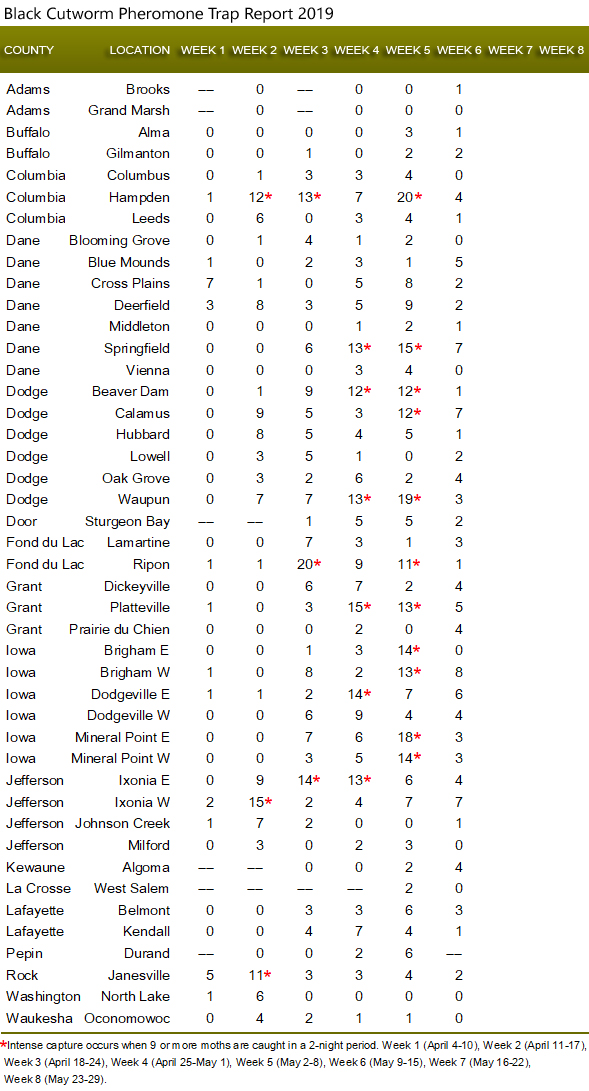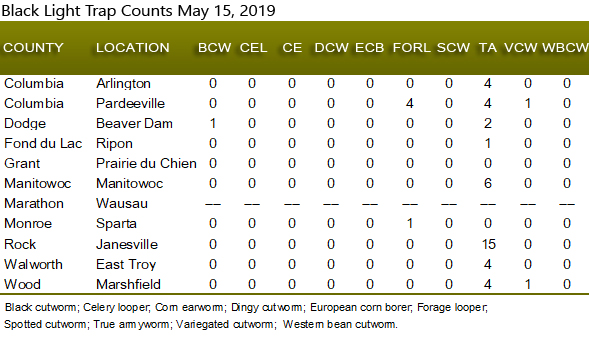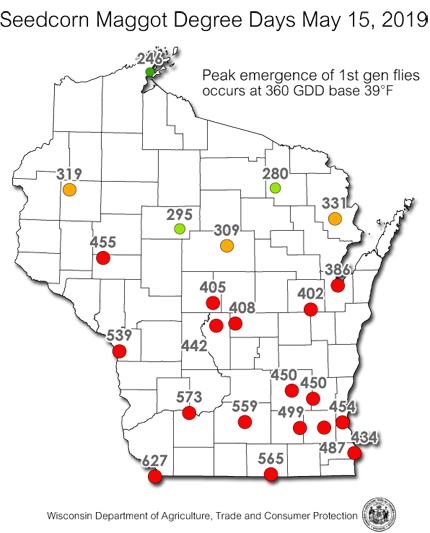
 |
|
|
Corn
Volume 64 Number 3 Date 05/16/2019 BLACK CUTWORM - Larvae produced by migrants that arrived in mid-April should grow large enough to begin cutting emerging corn plants by May 25 in advanced southern and western areas of the state. The cutting period is forecast to open by June 1 in central Wisconsin. A decrease in the number of moths captured in survey traps during the May 9-15 reporting period signals that the migration has slowed, though weedy field conditions remain highly favorable for egg laying. The spring migration, which started around April 4, has to date yielded a cumulative count of 867 moths in 44 traps. Approximately 1,162 moths in 47 traps had been collected by this time last year. Based on significant planting delays, late weed control, and consistent, moderate moth flights, much of the state's corn acreage is considered to be at high risk of cutworm infestation this spring. TRUE ARMYWORM - Moths have been arriving with weather systems for at least five weeks and continue to be collected in black light traps. The trap at Janesville in Rock County has reported significant weekly counts as high as 67 moths per trap since April 11. The recent capture of moths as far north as Marshfield confirms that the migration has extended into Central Wisconsin. First-generation armyworm larvae usually become noticeable in alfalfa fields by late May and in corn by early to mid-June. The success of the first generation will lay the foundation for the second generation in July. WIREWORM - Corn planted into fields formerly in grassy alfalfa, pasture or sod is at an increased risk of wireworm damage, which is especially important to consider this spring as winterkilled alfalfa acreage is replaced with corn. Wireworm larvae feed on the roots of grasses and germinating crop seeds. Symptoms are missing, wilted, or stunted seedlings and young plants. If wireworm damage is suspected, growers or consultants should dig up several ungerminated seeds or damaged plants along with a four to six inch core of surrounding soil to check for wireworms in and around roots, or in the underground portion of stems. Larvae may be extracted from soil by washing. Control options are limited and include disking up the affected portion of the field, treating with a soil insecticide and replanting. -- Krista Hamilton, DATCP Entomologist 





|
|
|